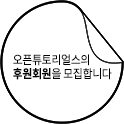Lesson1 존댓말honorific
There are at least three styles. 존댓말, 반말, 낮춤말
- If you don't want to know about korean culture
- Or not plan to watch historical korean movie.
- You can pass the red parts
- You don't have to know the words. But Just feel the context where the styles are used.
존대말 is the style to respect superiors of you.
- Especially parents부모님, elder노인/늙은이, people older than you
- teacher선생님, 스승님, senior선배님 in school
- boss사장님 in the company
- president대통령님, mayor시장, lawmaker의원 who have powers
- customer고객님 when you are salesperson
- etc...
Usually you use ~님 to their title to express your respect to them.
It can be ambiguous. Because there are peolple who are older than you, but in other way you are the superior of them. We usually follow the later one first. They use honorific to you. But also you have to use honorific to them. It is very important for korean to respect someone who is older than you. Even our president respect elders. If you use 반말 to them... Korean will think that you are arrogant and rude.
But even if it is equal relationship but you aren't more superior than them, You will use honorific to express respect for other especially if they are not close to you.
There are at least four honorific styles. 하옵나이다, 합니다, 해요, 하오 styles.
But 하옵나이다, 하오 style is no longer used. You can only see them in historical story or old writing.
하옵나이다 & 하오 Style Examples (Rarely used now)
- 주님, 저희는 죄를 지었나이다. 저희를 용서하소서. Lord, we have sinned. Please, forgive us. (하옵나이다 style. Pray to the God.)
- 그대여, 나도 데려가소... 왜 먼저 가셨소? 나도 죽으려오. You, take me with you. I will die too. Why did you leave first? (하오 style. The husband left behind his dead wife.)
Only two ways are still commonly used. These are "합니다"style, "해요"style. Both are honorific. So what's the difference between them? I will explain it in Lesson3, 4

